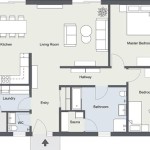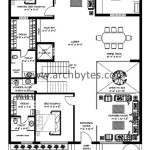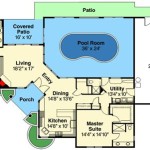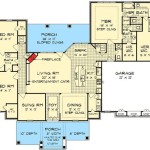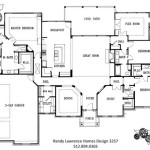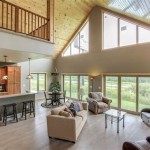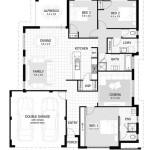Floor Plans For Mountain Homes: Designing for Altitude and Aesthetics
Designing a mountain home requires careful consideration of its unique environment. High altitudes, sloping terrain, and challenging weather conditions necessitate specialized floor plans that prioritize functionality, energy efficiency, and integration with the surrounding landscape. A successful mountain home floor plan not only maximizes living space but also embraces the natural beauty and addresses the potential challenges inherent in mountainous regions.
The planning process begins with understanding the specific site. Topography dictates the potential footprint of the house and influences the need for features like walk-out basements or stepped foundations. The direction of prevailing winds and sun exposure must be factored into the placement of windows and the orientation of the building to optimize natural light and minimize heat loss. Local building codes concerning snow loads, seismic activity, and fire safety are also crucial considerations that directly impact the structural design and material selection, and consequently, the floor plan itself.
Mountain homes often strive for a rustic, natural aesthetic. This preference influences material choices such as wood, stone, and timber, which are frequently incorporated into both the exterior and interior design. Large windows are commonly used to capture panoramic views, bringing the beauty of the mountains indoors. However, these design choices must be balanced with practical considerations like insulation and energy efficiency to ensure comfortable living throughout the year.
Optimizing Space and Functionality
Mountain home floor plans often prioritize open concept living spaces. This design encourages a sense of connection between the kitchen, dining area, and living room, fostering a social and inviting atmosphere. Open floor plans also allow for improved airflow and natural light distribution throughout the main living areas, which can be particularly beneficial in climates where days are shorter during certain times of the year.
Careful zoning of the living space is vital in open concept layouts. Defining distinct areas for cooking, dining, and relaxing through the use of furniture placement, area rugs, and changes in flooring material can create a sense of order and separate functionalities within the larger open space. Consider incorporating features like a breakfast bar in the kitchen, a formal dining table, and a comfortable seating arrangement in the living room, each contributing to the overall functionality and aesthetic of the open space.
Mudrooms are essential in mountain homes. These transitional spaces act as a buffer between the outdoors and the main living areas, providing a designated place to remove and store wet or muddy outerwear, boots, and other gear. A well-designed mudroom typically includes storage solutions such as built-in benches with cubbies, coat hooks, and shelving for organizing outdoor equipment. Durable and easy-to-clean flooring, such as tile or concrete, is recommended for mudrooms to withstand heavy foot traffic and the elements.
Smart storage solutions are critical in maximizing space, particularly in smaller mountain homes. Built-in cabinets, shelves, and drawers can be integrated into walls and underneath staircases to utilize otherwise unused spaces. Multi-functional furniture, such as ottomans with storage compartments or sofa beds, can further enhance storage capacity without sacrificing comfort or style. Maximizing vertical space with tall cabinets and shelving can also help to keep the floor clear and uncluttered, promoting a sense of spaciousness.
Bedrooms in mountain homes are often designed as tranquil retreats. Floor plans typically incorporate ample closet space, comfortable seating areas, and large windows that offer views of the surrounding landscape. Master suites often include en-suite bathrooms with luxurious features such as soaking tubs, walk-in showers, and double vanities. The location of the bedrooms within the overall floor plan should consider privacy and noise reduction, ideally situated away from high-traffic areas such as the kitchen and living room.
Bathrooms in mountain homes often feature natural materials like stone and wood to create a spa-like ambiance. Floor plans should accommodate adequate ventilation to prevent moisture buildup and potential mold growth. Heated floors can add a touch of luxury and improve comfort, particularly during colder months. Consider incorporating features like a linen closet or built-in shelving to maximize storage space for toiletries and towels.
Addressing Environmental Considerations
Energy efficiency is a paramount concern in mountain home design. Floor plans should be optimized to minimize heat loss and maximize natural light and solar gain. Proper insulation is essential for maintaining a comfortable indoor temperature and reducing energy consumption. Windows should be strategically placed to capture sunlight during the day and minimize heat loss at night. Consider using high-performance windows with low-E coatings to improve energy efficiency.
The orientation of the house on the lot can significantly impact its energy performance. Ideally, the long axis of the house should face south to maximize solar gain during the winter months. Overhangs and awnings can be used to shade windows during the summer, preventing overheating. Deciduous trees planted on the south side of the house can provide shade in the summer and allow sunlight to penetrate in the winter as they lose their leaves.
Sustainable building materials are increasingly popular in mountain home construction. Choosing locally sourced materials can reduce transportation costs and environmental impact. Repurposed or recycled materials, such as reclaimed wood or recycled steel, can add character to the home while minimizing waste. Consider using eco-friendly insulation materials, such as cellulose or sheep's wool, to improve energy efficiency and reduce environmental impact.
Water conservation is another important consideration in mountain home design. Low-flow toilets, showerheads, and faucets can significantly reduce water consumption. Rainwater harvesting systems can be used to collect rainwater for irrigation and other non-potable uses. Xeriscaping, a landscaping technique that utilizes drought-tolerant plants, can minimize the need for irrigation. Properly designed drainage systems are also crucial for managing stormwater runoff and preventing erosion.
Wildfire safety is a critical concern in many mountainous regions. Floor plans should incorporate fire-resistant materials and design features to minimize the risk of damage from wildfires. Non-combustible roofing materials, such as metal or tile, are recommended. Siding materials such as fiber cement or stucco are also more fire-resistant than wood. Creating a defensible space around the house by removing vegetation and debris can further reduce the risk of fire spread. Consider installing fire-resistant windows and doors to prevent embers from entering the house.
Integrating with the Landscape
Mountain home floor plans should prioritize integration with the surrounding landscape. Large windows and sliding glass doors can blur the lines between indoor and outdoor spaces, allowing residents to enjoy the natural beauty of the mountains. Decks, patios, and balconies can provide extended living areas and offer opportunities for outdoor dining and relaxation. Consider incorporating natural elements such as stone and wood into the exterior design to create a harmonious connection with the environment.
The use of natural light is essential in mountain home design. Floor plans should be designed to maximize daylight penetration throughout the house. Skylights and clerestory windows can be used to bring natural light into interior spaces that may not have access to exterior windows. Light wells can also be used to bring natural light into basements or lower levels. The interior layout should allow natural light to flow freely between rooms, creating a bright and inviting atmosphere.
Views are often a primary consideration when designing a mountain home. Floor plans should be carefully oriented to capture the best possible views of the surrounding mountains, valleys, and forests. Large windows and strategically placed balconies can frame these views and create a sense of connection with the landscape. Consider the placement of furniture and other interior elements to avoid obstructing views. The location of the house on the lot should be carefully considered to maximize views while minimizing exposure to harsh weather conditions.
Outdoor living spaces are an integral part of mountain home design. Decks, patios, and balconies can provide extended living areas and offer opportunities for outdoor dining, relaxation, and recreation. Covered porches can provide shelter from the sun and rain, allowing residents to enjoy the outdoors year-round. Consider incorporating features such as outdoor fireplaces, kitchens, and seating areas to create a comfortable and inviting outdoor living space. Landscaping can be used to enhance the beauty of the outdoor space and create a seamless transition between the house and the surrounding environment.
Accessibility is a key consideration for mountain homes, particularly for those with sloping terrain. Floor plans should incorporate features such as ramps, elevators, or stair lifts to ensure that the home is accessible to people of all ages and abilities. Wide doorways and hallways can also improve accessibility for those with mobility limitations. The location of the house on the lot should be carefully considered to minimize the need for steep driveways or walkways. Universal design principles, which aim to create environments that are usable by everyone, should be incorporated into the floor plan to ensure that the home is accessible and comfortable for all residents.

Small Mountain House Plans Houseplans Blog Com
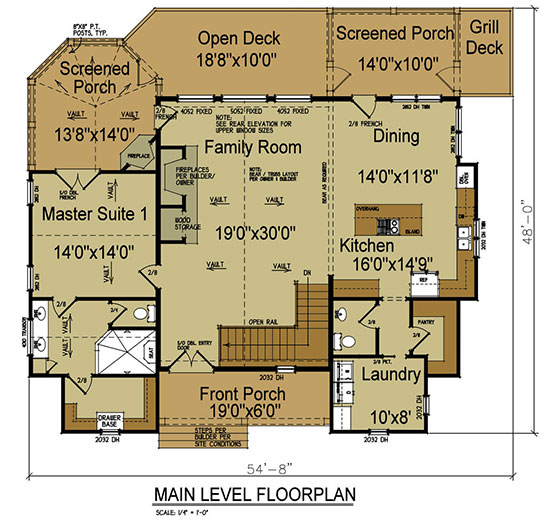
Mountain House With Open Floor Plan By Max Fulbright Designs

Mountain House Plans A 3 Bedroom Home With Front View

Mountain Home Floor Plans We Love Blog Eplans Com

Cedar Crest Cabin Log Home Floor Plan Beaver Mountain

Small Mountain House Plans Houseplans Blog Com

Single Story 4 Bedroom Modern Mountain Home With Optional Lower Level Floor Plan

3 Story 5 Bedroom House Plan With Detatched Garage

Small Mountain House Plans Houseplans Blog Com

Small Cabin Designs With Loft Floor Plans

